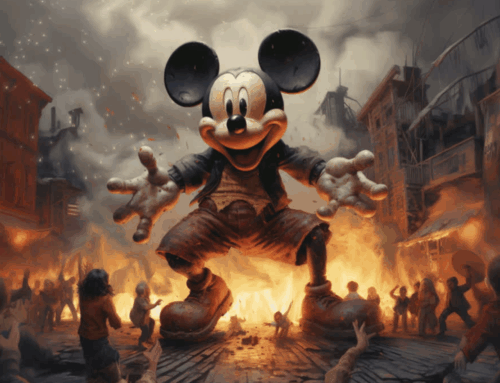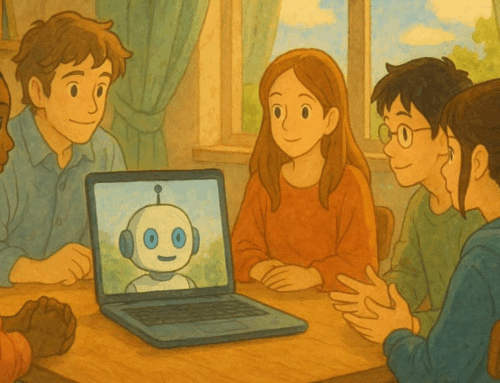Leonardo da Vinci looked at the world with the eye of an artist, and the raised eyebrow of a scientist.
Arguably one of the most creative people who ever lived, he produced paintings, sculptures, feats of civil engineering, and breakthroughs in anatomy, hydrodynamics, and optics.
Less than 20% of da Vinci’s notebooks have survived, totalling roughly 6,000 pages of notes, musings, drawings, and drafts. In his notebooks he collected ideas, from mythical fables to sketches of skeletons, from diagrams of fantastical inventions to coded cryptographic messages. Da Vinci used his notebooks to collect and sort all the possibilities of what he could create into a process that manufactured his ideas into art.
Creativity is focused tinkering over time.
You play with a project, on and off, as long as it interests you. That’s all creativity is – focused play.
‘Creatio’ is from the Latin. This word was designated as the divine act of ex nihilo – out of nothing, there is something. Christian philosophers argued that this was how man was made in God’s image, in that we shared the ability to create something from nothing.
Creatio has a different meaning than facere, which means ‘to make.’ Crafting something is different than creating it. In the game of Minecraft, you can combine two sticks of wood and three blocks of stone to make a pickaxe, if you have the recipe and a crafting table. But creating the recipe, ex nihilo – that is creativity.
Ravens only collect interesting objects they find in the world. When recent research showed they also are capable of using tools, it was sensational, because it implies more than just an attraction to shiny things. When a creature begins to create something from what it has collected, to sort it and craft with it, they reveal something of the divine.
Any beast can capture something, but only a creature with a higher nature can produce an artistic expression that catches your breath.
Creativity is the process by which art is made.
Art is how you transform what you find in the world into your interpretation of it.
An artist collects interesting things and makes something new out of them. You can gather inspiration from the world around you, and transform it into something completely new. But you have to have a lot of raw materials to start.
‘Once you clear your mind, you have to flood it,’ says Dilbert author Scott Adams, ‘with new input that’s not the old input.’ Inviting a cascade of new input gives your creativity a sea of data and inspiration from which to draw. Then the little muse in your head goes fishing, and plucks out seemingly random connections.
For some people, the creative process can seem almost mystical. Many people who experience it don’t even know how it works – you get into a curious state, you play around for a while, and then at the end there’s a chance you have something to show off to others.
Creativity is not esoteric; it’s just a process of discovery that is unique to you. The things that give you a creative spark are not the same as the things that work for me; we have to tune our experience individually, according to our own preferences and personalities. No matter what music you listen to when you create, or whether you stand or sit, or show up intoxicated or at the end of a fast, your creative process likely follows these five steps:
The 5-Step Creative Process
- Collect
- Sort
- Craft
- Polish
- Publish
The first stage, collection, works best as a habit. Bob Hope reportedly wrote down every joke he ever heard. Robin Williams was notorious for repeating the jokes of others, but he didn’t need to write them down, thanks to his encyclopedic memory. I use a GTD-style inbox to capture all of my good-enough ideas with a hotkey at my laptop. Being a diligent observer of the world will furnish you with a wide variety of material to use in your creativity.
The second stage, sorting, is when you sift through your collection to find things that are meta-interesting. Sorting these ideas will reveal combinations that fan your creative spark into a flame. ‘It’s at the intersection of ideas that new ideas emerge,’ as Col Fink likes to say. A curious artisan will notice when the available ideas present the opportunity for synergy – when the combination of ideas can result in something more than simple addition. Tidying up your collection of shiny things can often reveal inspired work.
The third stage, crafting, is where you take the prototype that you can barely see, and shape it into something that has individual meaning. You might be painting blobs on a canvas, until you notice that the curves have a relationship that suggests a new shape, something that really lights you up. Crafting your work to that new shape defines the art. Your creation becomes something that you discovered along the way. You may not have had this in mind when you started, but the crafting reveals the work.
The fourth stage, polish, is when you work to remove all the imperfections that distract from what you are trying to craft. ‘Perfection is achieved,’ said Antoine de Saint-Exupery, ‘not when there is nothing more to add, but when there is nothing left to take away.’ When Michelangelo was asked how he created the sculpture David, he said that he spent four years chipping away everything that was not David. Polishing can be a trap, for perfectionists, and your work can stall here before reaching its final stage.
The fifth stage, publish, is when you share your work with the world. There is no longer any change, because the work has been birthed from your midwifery. Publishing a work can leave the artist feeling lost, because nurturing and exploring an idea in the safety of your workshop can be intimate and safe. When you publish, your work is no longer your own, and it is exposed to criticism and praise, ridicule and adulation.
Publication incarnates the work of art.
Before you publish, what you’re doing is just a hobby. Creatives make neat things and share what they make.
‘Ship often. Ship lousy stuff. But ship.’ – Seth Godin
Shipping your work is like flexing a muscle. Every time you publish, you create more to share, add more to your body of work, and increase your reputation. Muscles become stronger with repeated use. Publishing your work – even if you are dissatisfied with it – will make you better at publishing, and that is the biggest difference between the professional artist and the hobbyist creative.
If you think your work is not good enough, I’ll remind you of this story by Ira Glass:
‘Nobody tells this to people who are beginners, I wish someone told me. All of us who do creative work, we get into it because we have good taste. But there is this gap. For the first couple years you make stuff, it’s just not that good. It’s trying to be good, it has potential, but it’s not. But your taste, the thing that got you into the game, is still killer. And your taste is why your work disappoints you. A lot of people never get past this phase, they quit. Most people I know who do interesting, creative work went through years of this. We know our work doesn’t have this special thing that we want it to have. We all go through this. And if you are just starting out or you are still in this phase, you gotta know its normal and the most important thing you can do is do a lot of work. Put yourself on a deadline so that every week you will finish one story. It is only by going through a volume of work that you will close that gap, and your work will be as good as your ambitions. And I took longer to figure out how to do this than anyone I’ve ever met. It’s gonna take awhile. It’s normal to take awhile. You’ve just gotta fight your way through.’
Every artist leaves a thousand projects unfinished. It’s in the nature of creative work. Some of your worst ideas, you should let those go, and be happy about it.
But the ones that give you conflict – they pull at you, and you’re unsure if it’s worthy, or if you are worthy, or if the world is ready – those are the works of art that usually end up mattering the most.
Publishing is not the most important step in the creative process, it just happens to be at the end.
What is your creative process?
How do each of these five steps happen for you?
- Collect
- Sort
- Craft
- Polish
- Publish
How many systems do you need for these five steps? Write down these five words on a sheet of paper, and next to each one list the locations – both physical and digital – where each of these steps takes place for you. Is it on your desk, or your computer? In a specific program, or a folder? Is it different for writing, or painting, or tinkering? How do you know when a piece of art is ready to transfer from one step to the next?
A creative who can manage all five of these steps simultaneously, across multiple projects, will always be shipping new art. I have folders of collection that span years, for a wide variety of projects and ideas. When I want to work on one, I can dive into a treasure trove of ideas I have collected and ferreted away, to sort and find the very best of the best.
Some of the items in this article have been floating in my creative storehouse for more than five years, and when it came time to write today, I felt like a gleeful kid whose fave comic book just had a new issue hit the stands. I collected all these things because they were cool, and when I sort and I craft, it’s time for me to play with all the cool things that I found in the wide, wide world.
Creativity is the process of refining order out of chaos.
According to a poll by FastCompany, 60% of CEOs said that the most important leadership skill was creativity. Not integrity, delegation, or communication. Creativity.
Following the 5-step creative process can improve your leadership skills – not just in leading others, but also, in leading yourself.
I’m sure you’ve had the satisfaction of setting a finished project on your desk, or a table, or a shelf, and admiring its completion. Think of one of those creative works you’ve completed. If it’s nearby, look at it right now.
Do you feel that peculiar satisfaction of distance? When you have polished all that you need to polish, and you can finally let a creative work be complete, you have made something, out of nothing.
That feeling becomes more attractive with familiarity. The more you publish, the more you will publish.
This article is an excerpt from my next book, Playful Productivity. To get notified when it’s ready, sign up for the wait list here.






Leave A Comment